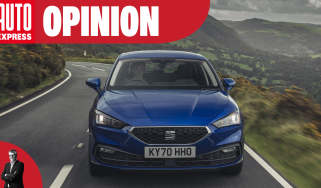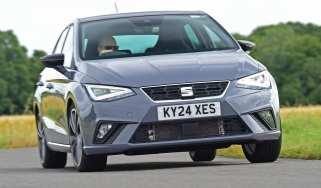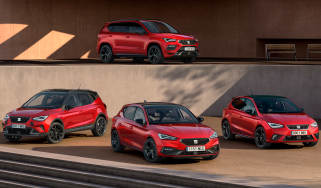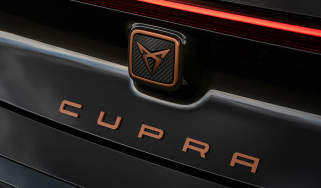SEAT plans SUV assault
Three new SEAT SUVs are on the horizon, with the brand's Nissan Qashqai rival coming in 2016
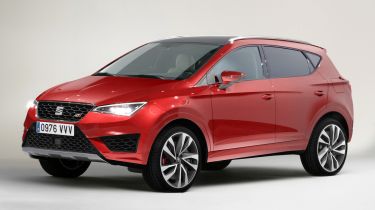
Ahead of SEAT’s long-awaited Qashqai rival due in 2016, company boss Jurgen Stackmann has revealed plans for two additional SUVs which will join the ranks. A smaller Nissan Juke rival and larger seven-seat model are expected to join SEAT’s product portfolio in the near future.
We've known about themid-sized SUV for some time but discussions on bringing a smaller crossover to the market are well underway. “We are keen to get it done. That is where the market is moving and to a segment that is almost purpose made for SEAT, combining function and emotion,” said Stackman.
“We got that formula correct with the Leon, I think we have it right with the mid-size SUV and the more compact SUV is a logical extension,” he added. “People still want a compact car to drive but want a little more expressiveness and higher driving position, comfort and agility. That is the perfect car to us, it’s just a matter of time.”
An arrival in 2017 would give the mid-sized SUV some breathing space, with Stackman also confirming the Juke rival would be made available with front wheel drive only.
At the opposite end of SEAT’s future SUV family, a large seven-seater wasn’t ruled out by Stackmann. “Strategically and potentially yes, but can we make business sense of it?” he added. “It’s a highly competitive market but conceptually we could create something beautiful which fits the brand.”
Jurgen Stackmann Q&A

Why has it taken so long to create the SUV?We are the smallest volume manufacturer in the VW Group in Europe and the steps we make have to perfect, we cannot get sloppy with timing or design. The car was approved when we were really ready for it, we cannot allow any mistakes in cost, value or design.
And its price?There are a number of cars in that segment which define the price band where we will be competing.
What can we expect other than SUV’s and crossovers?Returning to a convention [saloon] body style is a no go for us. The market is moving premium or to other body styles. The Toldeo matters to few markets, it has almost no relevance in the UK but it is important for Spain, Mexico and North Africa. The Europen eye is very much used to hatch, SUV and estate. The time for big limousines is over. Big experimentations in body styles is not what we will do.
With SEAT being a sporting brand, will there be a stand-alone sports car?I see us focusing on cars customers really want from us. They want sportiness, crispiness and agility but they don’t want hardness or compromise. Someone who really takes a big compromise buys premium cars, they rarely drive value cars. We need to keep pace with relevant growth.
What about hybrid powertrains?For the time being I’d like us to stay focused but if we seem demand we can easily implement the [hybrid] technology. But we will probably see plug-in hybrids first within our range.
Can we expect a large product expansion in the future?The philosophy is very simple, I’m not a big fan of ever ending expansions because reality is that it very hard to keep focus on them all at the same time.
It is an Ibiza, Leon and SUV company with a fourth pillar made up of Mii, Toledo and Alhambra. I don’t think we need more cars, we need cars in the right place and where the customer wants us to be with the right price. I would prefer to have three strong families of cars that everyone understands and we can promote. I’d rather exchange one [model] for a better [model] than just add everything together, this brand needs focus and that has taken us to the next level.
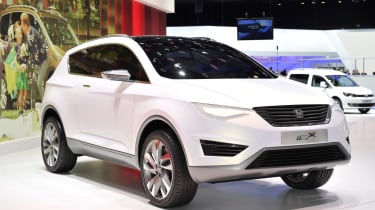
Is SEAT becoming a more premium brand?Being cheap and low cost cannot be our strategy that is not what we do and that will be our direction for the future. Within segments we will always be affordable, we are not talking premium, that is not within our strategy but we need to be able to open our brand to new customers.
Global growth?Our goal as a team is to create a sustainable company and I firmly believe this goal will be achieve in Europe. There is sufficient space to grow. The entrance of the compact SUV segment opens up a market of 1.2million cars for us. We can make this company stable, profitable and sustainable with the geography we have today.
If we look to the future we have two directions, which we are analyzing heavily. Is there a brand fit for China? I think there could but there has to be a stable business model.
How will concept cars play a role in product development?With a brand focusing on design a concept might play a role here and there but don’t expect an endless wave of stuff. When we have to tell a story or message then its time to show a concept.
What do want to have achieved by the end of the decade?A sustainable brand standing on its own feet and making money.
Can SEAT's new crop of SUVs make an impact in today's crowded marketplace? Let us know your thoughts in the comments section below...
Find a car with the experts

